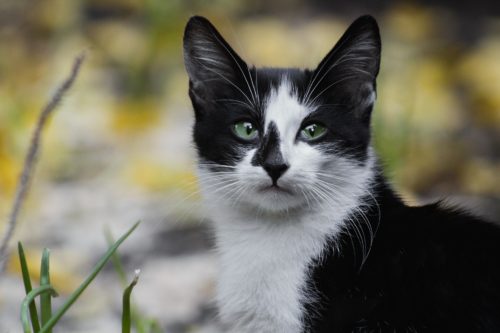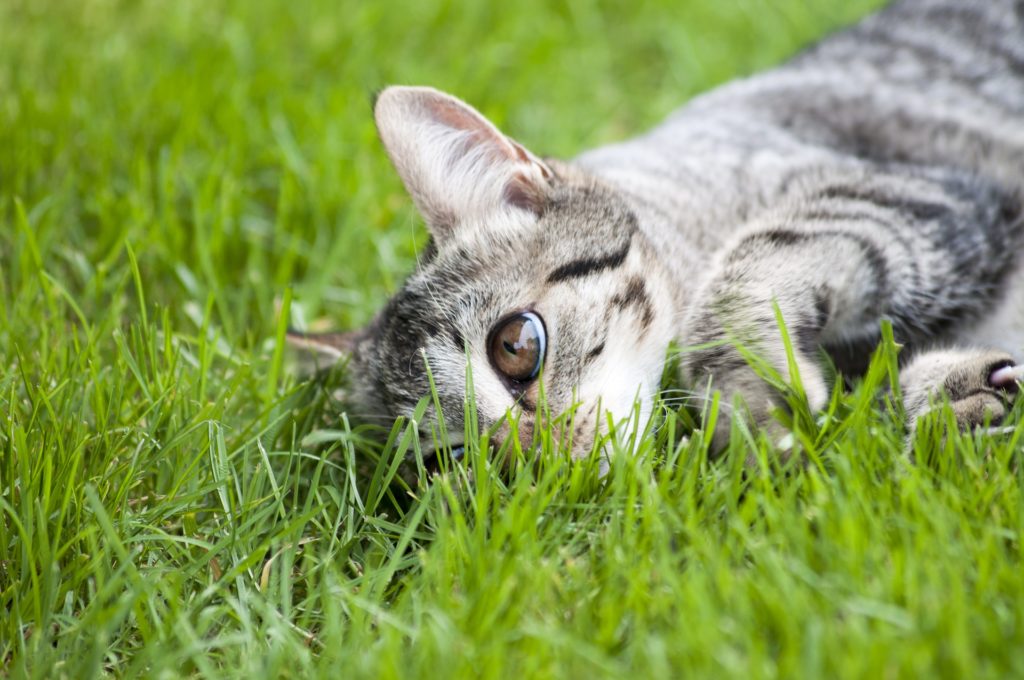Chances are, you have a friend or family member affected by food allergies. But did you know that food allergies in cats are also growing?
The increasing knowledge of food allergies in cats has led to more diagnoses. Unlike seasonal allergies which occur during certain times of year, food allergies can flare up year-round.
So how do you know if your cat has a food allergy, and what can you do to treat it? Read on for keys to understanding food allergies in cats.
What Are Food Allergies in Cats?

The first key to understanding food allergies in cats is to understand what they are. Food allergies are the third most common type of allergy in cats behind flea bites and inhaled substance allergies. Look out for itchy, irritating skin problems in cats, which can initiate an increase in itching and scratching. Additionally, 10 to 15 percent of cats with a food allergy exhibit gastrointestinal signs such as vomiting and diarrhea.
Unlike other allergies, food allergies can take months, even years, to develop. Unfortunately, the exact reason a food allergen develops, especially when that food has been consumed for some time, is unknown.
Understanding Food Allergies in Cats Versus Food Intolerance
Defined as an adverse reaction to a food or food additive, food allergies can often be mistaken for food intolerance.
- A true food allergy elicits a reaction from the immune system and affects different organs in the body. Reactions can range from mild to severe, even life-threatening.
- Food intolerance is not linked to the immune system. Generally less serious, intolerances are often limited to the digestive tract.
What Causes Food Allergies in Cats?
Food allergies occur when the immune system overreacts to a certain food after it has been ingested. Antibodies respond to the offending item and produce symptoms like skin irritations or gastrointestinal issues.
The most common causes of food allergies are:
- Common protein sources in cat food such as beef, lamb, corn, rice, soy, gluten, and dairy products
- Preservatives, dyes, or flavor enhancements
- Foods that are atypical to a cat’s natural diet, otherwise known as “biologically inappropriate” ingredients
More often than not, a low-quality protein source is behind a food allergy.
What are the Symptoms of Food Allergies in Cats?
Symptoms of food allergies in cats include:
- Increased itching or scratching
- Fluid-filled lumps on the skin
- Skin rash on the head or neck
- Weight loss
- Anorexia, food avoidance, or loss of appetite
- Vomiting
- Diarrhea
- Hair loss or a dull coat
- Inflammation
- Ear infections
Call your vet if you observe these symptoms in your feline friend. Over-scratching can lead to secondary bacterial infections on the skin. Additionally, if your cat does have food allergies, prolonged exposure to the allergen could lead to life-threatening results.
How are Food Allergies in Cats Diagnosed?

To determine whether your cat has a food allergy, your veterinarian will ask about your cat’s diet and how long you’ve administered certain types of food. Doing so will help differentiate between food allergies and other common allergies, plus mange and infection, for proper treatment.
Unlike other illnesses, lab tests are not reliable for diagnosing food allergies. The best way to diagnose and treat a food allergy is through an elimination diet.
An elimination diet removes potential allergens and slowly introduces different foods until the offending allergen(s) is/are discovered. Your vet will most likely prescribe a strict diet of two foods which the cat has never eaten: one protein and one carbohydrate. Over the course of eight to ten weeks, the cat will remain on this diet until symptoms disappear.
At this point, your vet will have you introduce additional food to test reaction. If no symptoms occur in the two weeks that follow, that food is most likely not the allergen in question. The vet will have you repeat this process until a reaction to a certain food is observed.
How Are Food Allergies in Cats Treated?
The elimination diet is the most effective way to identify, and remove, the allergen. Once the allergen has been identified, it must be permanently removed from the cat’s diet.
Your vet may also suggest the following:
- Antihistamines: Antihistamines help relieve suffering cats immediately, but only over the short term.
- Antibiotics: If a secondary bacterial infection is present, your vet may prescribe an antibiotic to ward off harmful bacteria.
- Probiotics: Once the new diet is started following the elimination diet, probiotics may be introduced to restore the good bacteria needed for the GI tract to function properly.
Treating food allergies in cats is a lengthy process requiring patience. By working with your vet to identify and remove the allergens, you can ensure a happy, healthy life for your feline friend.




